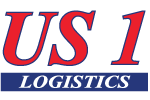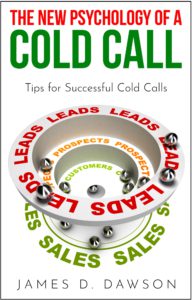“Your profile isn’t a resume—it’s a storefront. Here’s how to turn views into conversations.”
Stop Selling—Start Attracting
If you’re a freight broker agent, drayage agent, or truck freight broker trying to grow your book of business, LinkedIn is more than just a digital handshake. It’s your sales funnel, your referral engine, and your personal brand-builder—all rolled into one. But if your profile still reads like a dusty resume from your last job hunt, you’re not just blending in—you’re leaving business on the table.
Your headline is prime real estate. Don’t waste it with generic job titles. Speak to your audience. Instead of “Independent Freight Agent,” how about: “Helping Midwest Shippers Cut Transit Delays & Improve FTL Turnaround Times”? It tells prospects exactly what you do and who you do it for.
Then comes your summary—your digital elevator pitch. This is where you highlight what you’ve done (briefly), who you help (specifically), and how you deliver results (clearly). Include real outcomes: “Reduced delivery time by 22% for a national retailer,” or “Helped a seafood shipper avoid port congestion with optimized reefer routing.”
Want extra credit? Add rich media—case studies, testimonials, even a 60-second video intro. These elements show you’re not just another freight agent. You’re a problem-solver, a relationship builder, and a logistics partner who gets results.
Because here’s the truth: people don’t just hire logistics—they hire trust. And a strong LinkedIn profile is your trust-builder, 24/7.
Searchable = Sellable
To attract the right leads, your profile needs the right keywords—because LinkedIn works like a search engine. If you want to show up when shippers are looking for logistics help, you have to speak their language.
Start with the basics. Use industry-specific terms like “freight broker agent,” “intermodal agent,” or “freight agent broker” in your About section, your job experience entries, and your Skills list. These aren’t just buzzwords—they’re magnets for search visibility.
But don’t stop there.
Think like a shipper. If someone’s sourcing freight help for a specific region, they’ll often include geography in their search. So add phrases like:
-
“Serving Southeast distribution centers”
-
“FTL and LTL support across the I-65 corridor”
-
“Specializing in reefer freight from Alabama to the Midwest”
By tying your expertise to lanes, modes, and regions, you go from being a generalist to showing up as a freight solution with context.
Bonus tip: Even your headline can do heavy lifting. A line like “Helping Tennessee & Alabama shippers cut costs on time-sensitive LTL” includes mode, geography, and a value prop—all in one scroll-stopping sentence.
When your keywords are dialed in, your visibility increases, your inbound inquiries improve, and your connections start converting faster. That’s not luck—it’s strategy.
Connection Is a Conversation Starter
Don’t just blast connection requests—curate them like you would your dream client list. The goal isn’t to hit a number—it’s to build a network that turns into real conversations (and eventually, real revenue).
Start by identifying your freight niche—whether that’s LTL out of Chicago, hotshot runs in the Southeast, or reefer freight for food distributors. Then, use LinkedIn’s search tools to filter for logistics managers, transportation directors, warehouse coordinators, or supply chain pros in those spaces.
Think industries, not just job titles. If you specialize in medical equipment, search for healthcare logistics roles. If you’re strong in retail lanes, find people overseeing distribution at consumer brands.
When you send that connection request, avoid the typical “I’d like to add you to my network” line. Instead, go for something like:
“Saw your role at [Company]—I work with similar shippers out of [Region] and thought it’d be good to connect.”
Short. Contextual. Human.
This approach makes it clear you’re not just another pitch—you’re a relevant connection with shared ground. And that’s the first step in building trust.
Remember, freight is relationship-driven. Every connection request should feel like a handshake, not a sales pitch.
Content That Doesn’t Feel Like Cold Calling
Want to show up consistently on LinkedIn without sounding like a pushy salesperson? You need a content rhythm—not a content blitz.
Think of your posts as mini-conversations, not billboards. You’re not selling—you’re positioning yourself as someone who solves freight problems. And that means posting with purpose, not pressure.
Here’s a simple 3-post formula to keep you visible (and valuable):
🚚 Tips That Teach
Give away small wins. Things you’ve done recently that made a shipper’s life easier.
-
“3 ways we helped a Midwest shipper cut hotshot costs.”
-
“Why this simple tweak in LTL routing saved our client $1,200 last quarter.”
These posts position you as an expert without bragging—and they show how you deliver results.
❓ Questions That Spark Engagement
Invite your audience to share. Even if they don’t comment, they’re paying attention.
-
“What’s your biggest LTL headache right now?”
-
“Anyone else noticing longer port delays out of Savannah this month?”
These posts create connection. They turn cold followers into warm leads.
🏆 Wins That Build Trust
Highlight recent wins in a way that’s human, not hype.
-
“Just helped a new client get reefer coverage under 24 hours.”
-
“New account moving 20+ FTLs a month—we’re streamlining their Midwest lanes as we speak.”
Use plain language, not jargon. And keep it focused on the benefit to the client.
Remember, even if only a few people engage with your posts, plenty are watching. LinkedIn visibility is about top-of-mind awareness. So when a logistics manager hits a wall with a current carrier or has a lane open up—they’ll think of you first.
Consistency builds credibility. And credibility drives conversions.
From Views to Value
Your LinkedIn profile isn’t just a digital identity—it’s a lead magnet. In today’s freight world, shippers aren’t waiting for your call—they’re Googling you, checking your LinkedIn, and silently vetting whether you’re the kind of pro they want to work with. If your profile looks outdated or generic, you’re invisible. But if it’s strategically crafted? You become a magnet for decision-makers.
That means using a banner image that speaks to your niche, a headline that solves problems (not just lists your title), and a summary that tells a compelling story—not just a job history. Every word should make shippers think, “This person gets it.”
Pair that with a smart connection strategy—targeting the right titles, industries, and logistics roles—and suddenly, you’re not just building a network, you’re building a pipeline.
Top it off with daily visibility. That doesn’t mean posting just to post. It means showing up with content that educates, engages, or entertains: shipping insights, lane trends, mini case studies, or even a behind-the-scenes win. Show up as a resource, and you’ll be remembered as a partner.
Ready to make your profile work for you 24/7? Message me—I’ve helped freight broker agents, trucking agents, and intermodal pros turn their LinkedIn presence into prospecting powerhouses. Let’s get you seen, trusted, and booked.


Recent Comments